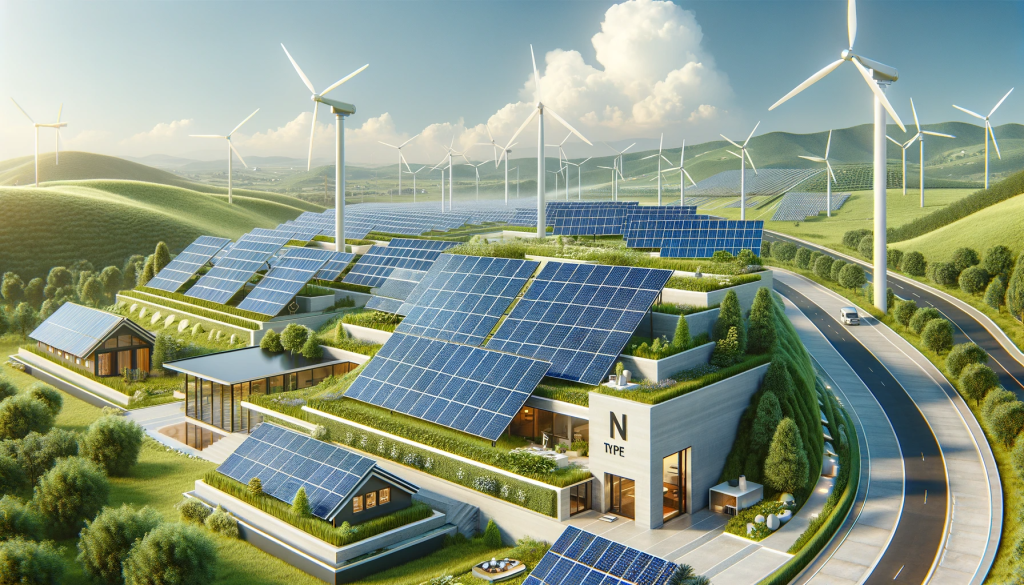Have you ever wondered about the technology behind the increasingly popular solar panels? Specifically, the N-type TOPcon technology? Let’s dive into this fascinating world and explore its pros and cons. This article is designed for the general public, so we’ll keep things light and easy to understand.
Contents
| Sr# | Headings |
|---|---|
| 1 | What is N-type TOPcon? |
| 2 | Advantages of N-type TOPcon |
| 3 | Disadvantages of N-type TOPcon |
| 4 | N-type TOPcon in the Solar Industry |
| 5 | Environmental Impact |
| 6 | Cost Analysis |
| 7 | Durability and Maintenance |
| 8 | Performance in Different Climates |
| 9 | Technological Comparisons |
| 10 | Future Prospects |
| 11 | FAQs |
What is N-type TOPcon?
N-type TOPcon is a type of solar cell technology. Imagine a solar cell as a sandwich; the N-type TOPcon is the special sauce that makes this sandwich more efficient. It uses a combination of advanced materials to convert sunlight into electricity more effectively.

Advantages of N-type TOPcon
Increased Efficiency: One of the biggest advantages of N-type TOPcon is its high efficiency. It’s like having a sports car instead of a regular sedan; you get more power (or in this case, energy) from the same resources.
Longevity: These cells tend to have a longer lifespan. Think of it as a pair of high-quality shoes that last longer than cheaper ones.
Disadvantages of N-type TOPcon
Cost: The advanced technology of N-type TOPcon can be more expensive. It’s like paying extra for a gourmet burger over a regular one.
Complex Manufacturing: The production process is more intricate, which can lead to higher initial costs and potential challenges in manufacturing.
N-type TOPcon in the Solar Industry
This section will delve into how N-type TOPcon is changing the solar industry, much like how smartphones revolutionized communication.
Environmental Impact
We’ll explore the environmental benefits and considerations of N-type TOPcon, likening its impact to that of electric cars compared to gasoline cars.
Cost Analysis
Here, we’ll break down the costs and savings, making it as easy to understand as planning a household budget.
Durability and Maintenance
How durable are these solar cells? Are they high-maintenance like a luxury car, or low-maintenance like a trusty old bike? Let’s find out.
Performance in Different Climates
Does N-type TOPcon work as well in Seattle’s rain as it does in Arizona’s sun? This section will tell you.
Technological Comparisons
We’ll compare N-type TOPcon with other solar technologies, much like comparing different brands of smartphones.
Future Prospects
What does the future hold for N-type TOPcon? This section will look ahead, imagining the possibilities as one would with emerging technologies.
Conclusion
In summary, N-type TOPcon is a game-changer in solar technology, but it’s not without its drawbacks. Understanding both sides of the coin helps us make informed decisions about our energy future.
FAQs
- What makes N-type TOPcon different from other solar technologies?
N-type TOPcon stands out due to its unique layering and material composition, which results in higher efficiency and durability. Unlike traditional solar cells, it uses n-type silicon with a passivated contact, enhancing its ability to convert sunlight to electricity more effectively. - Is N-type TOPcon environmentally friendly?
Yes, N-type TOPcon is environmentally friendly. It offers a greener alternative to conventional energy sources, reducing carbon footprint. Its long lifespan also means less waste and a smaller environmental impact over time. - How does the cost of N-type TOPcon compare to traditional solar panels?
Initially, N-type TOPcon may be more expensive than traditional solar panels due to advanced technology and manufacturing processes. However, its higher efficiency and longer lifespan can lead to greater savings in the long run, making it a cost-effective choice over time. - Can N-type TOPcon withstand harsh weather conditions?
N-type TOPcon is known for its durability and can perform well in various climates, including harsh weather conditions. Its robust design ensures consistent performance and a longer operational life, even in challenging environments. - What is the future of N-type TOPcon in solar technology?
The future of N-type TOPcon looks promising, with continuous advancements expected in efficiency and cost-effectiveness. It’s poised to play a significant role in the evolution of solar technology, contributing to more sustainable energy solutions globally.


